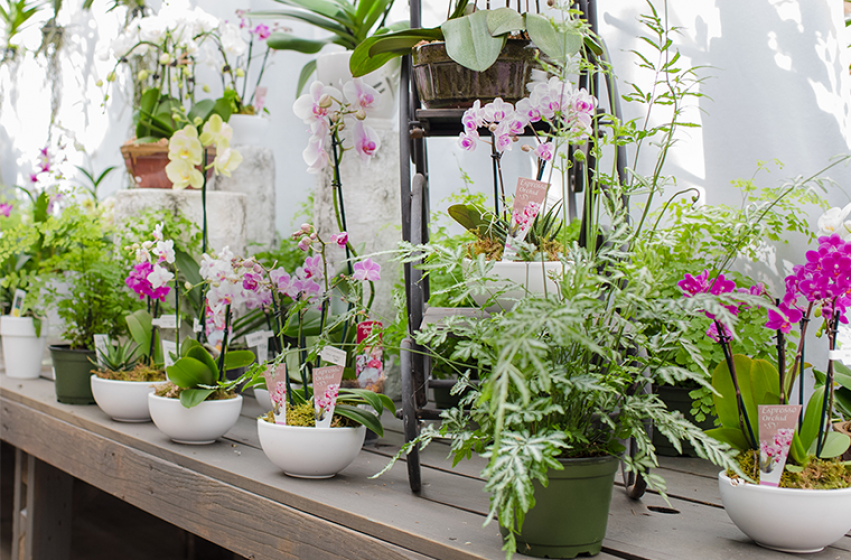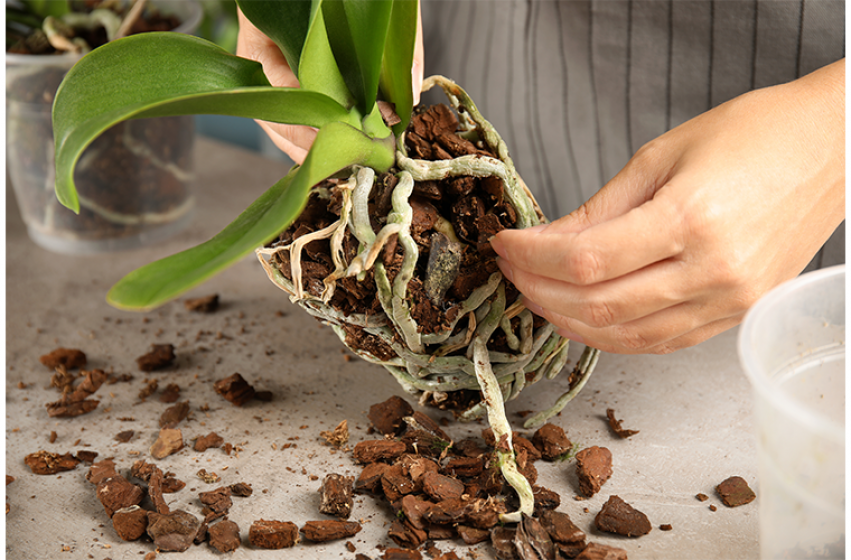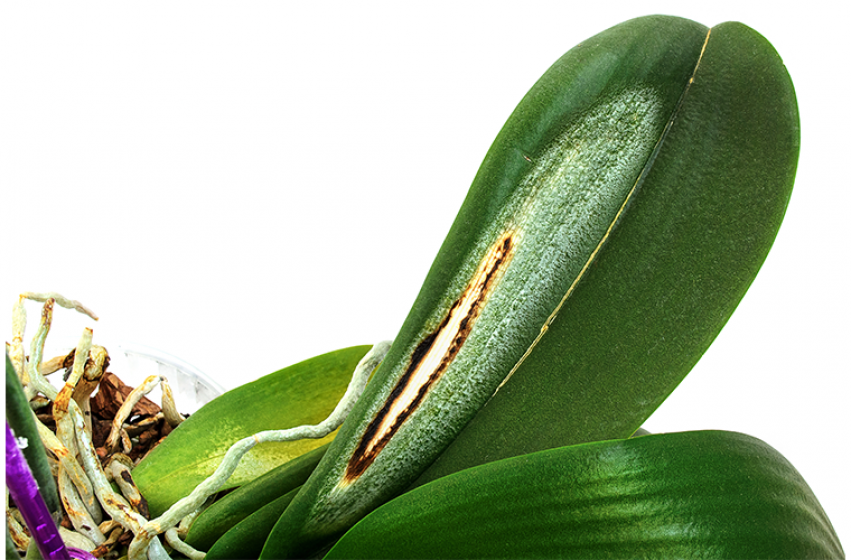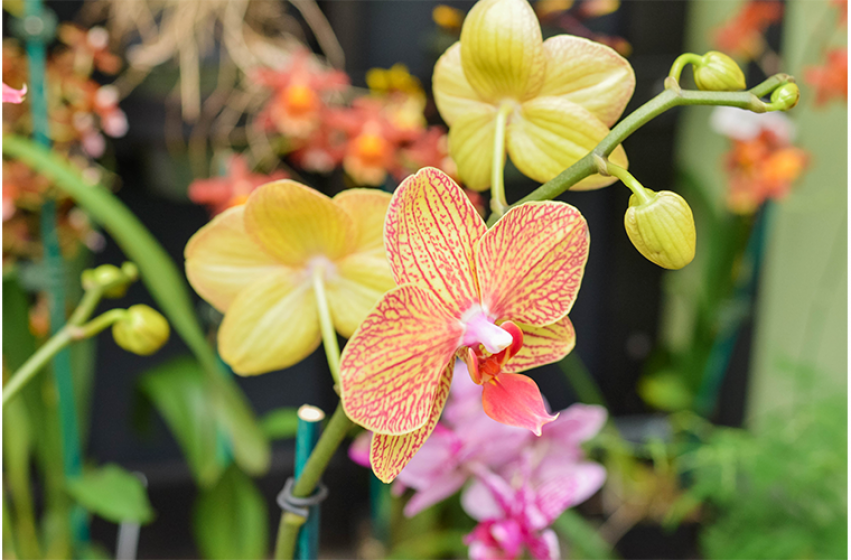Nowadays, most people don’t give much thought when buying an orchid. Orchids are readily available in grocery stores, big box stores and online and, oftentimes, priced for just about anyone’s budget. But if you want your orchids to endure, a little more thought than simply putting a Phalaenopsis into your grocery cart is needed. McDonald Garden Center offers some unique and interesting plants — and orchids are among these. In fact, we have one of the largest orchid selections in Hampton Roads.
When selecting an orchid, it's a good idea to take a few steps to guarantee you're getting the healthiest plant possible, one that will survive long past its first bloom. Here are a few steps to help ensure that you’re orchid will endure overtime:
Give it the Jiggle Test
Gently grab the plant near the potting media and wiggle it a little. If the roots haven't firmly affixed themselves to the pot, gently lift the orchid from the container and carefully inspect. If it's firmly affixed to the pot, don't tear it out - you don't want to damage the roots. It's okay if a few roots are poking out of the top of the pot.
It’s Root-a-mentary
The roots are the most important part of the orchid plant. Orchid roots are extremely specialized organs that collect water and perform photosynthesis. A healthy orchid’s roots will be light green when dry and dark green when wet. There should be a long, pointed and shiny green growing tip. The longer the growing tip, the better. Dead orchid roots are shriveled and tan when wet and white when dry. A plant with no living roots will not survive very long. When repotting, it is best to removed the non-functioning dead roots.
Assess the Leaves
Some orchids have thin, pencil-like leaves, while others have fleshy, flat leaves. Look for leaves that are thick and rubbery, lightly colored, and firm. Leaves should be slightly yellow-green, almost like a green apple. Leaves should also be free from bugs, obvious blemishes, and mushy spots.
Tip: Mushy spots are often caused by viral bacterial. The bacteria is easily spread through unsterile cutting tools and splashing water. When handling infected orchids, sterilize everything that touches the plant. Alcohol dips between each use of tools and hands is helpful when disease is found.
Don’t “Count' on the Blooms
If you're buying an orchid in flower, resist the urge to buy a plant with all of its blooms already opened. Long-lasting orchid blooms might last for a month or more, but if you select a plant with unopened blooms, you'll enjoy the overall show for longer.
What’s in a Name?
If you are buying an orchid for exhibition or crossing with other orchids, it's a good idea to make sure your orchid has a tag containing its full name whenever possible. Beware of plants labeled as 'ORCHID' or 'FLOWERING ORCHID.' It's best to know the orchids full species or hybrid name whenever possible. This way you can learn more about that particular variety, and if you decide to start a collection, it's good to know what you're growing.
Acclimate Your Orchid
It's okay to display your new orchid on the table for a week or so when you first get it home, especially if it's in bloom, but keep in mind that no orchid will survive for long on a dining room table without proper care (light and watering, etc.). Your orchid will need an adjustment period to get acclimated to the new growing conditions. In commercial production, the plants are in an accelerated state. It takes time to adjust to the slower growth in the home environment. If the room is dark or the air is very dry for too long, you may have some bud loss. For long-term success, it's best to enjoy your orchid in a key position for a few days then move to your best growing area to improve vigor. An inexpensive houseplant light meter is very helpful in identifying the best locations for your plant. Remember, you're most likely to lose unopened buds when you take the plant home.
In the first few days after you get your orchid home, it’s best not to expose the plant to direct sunlight, cold drafts or downdrafts from vents, or get carried away with watering. It’s better to let an orchid dry out somewhat than drown. Orchids like high humidity and regular moisture, but they have a limited tolerance for constant exposure to water, which can cause black rot and kill the plant.
Orchids are one of the most prevalent species on earth. Armed with the species name, it is easy to find the part of the world and the growing conditions that occur in that plant's native habitat. The American Orchid Society
information sheet is very reliable when researching new species or when identifying problems. Click here to view The American Orchid Society information sheet.




